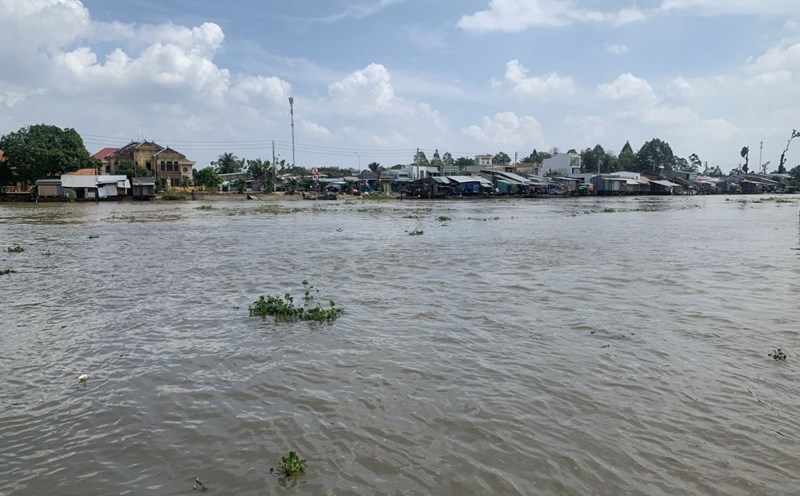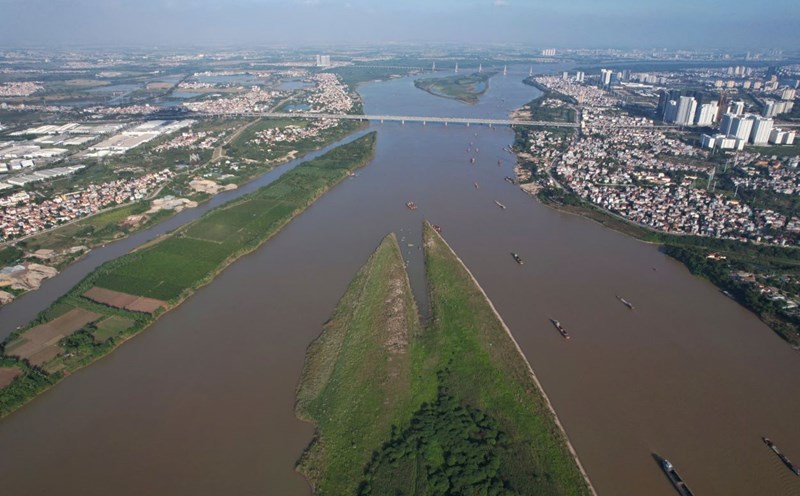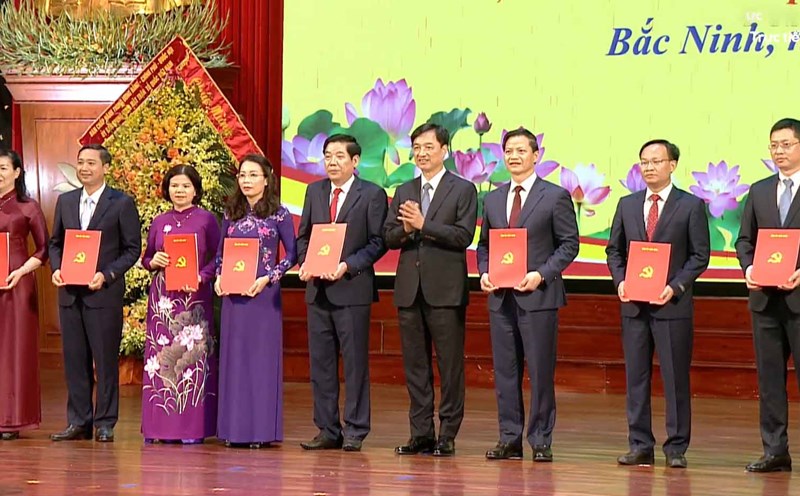THE ONLY RIVER BORN IN VIETNAM
Historian Tran Quoc Vuong commented during his lifetime: “Thanh Hoa land is a miniature image of Vietnam. In terms of terrain, Thanh Hoa has sea, mountains, midlands, coastal plains, and deltas just like Vietnam.”
The late professor Tran Quoc Vuong's subtle comment pointed out the great contribution of the Ma River, which is beyond the common perception of many people: This is the river that has created the third largest delta in Vietnam, after the Red River Delta and the Mekong River Delta.
Perhaps because the scale of the Red River Delta and the Mekong River Delta is so large that it has unintentionally obscured the Ma River Delta, the last flat land before entering the long and thin “central region”. That delta is Chau Ai - the homeland of brave soldiers, brave generals, national heroes and kings.
It can be said that the Ma River is a unique river in Vietnam. While other great and famous rivers originate abroad and flow into Vietnam, only the Ma River originates in Vietnam, flows to Laos and then returns to Vietnam before emptying into the East Sea.
The Ma River originates from the Nam Hon stream (Tuan Giao, Dien Bien), then receives water from the Nam Sat stream and the Nam Co stream, begins to form the Nam Nua river and flows to the Southeast. The Nam Nua continues to the South, reaching the Pac Ma junction, where it meets the second stream flowing from Dien Bien Dong district.
From this confluence point, the Ma River officially takes its name and flows in a Northwest - Southeast direction and into Laos. Here, the Ma River flows through Huaphanh province and receives water from the Nam Et stream before returning to Vietnamese territory in Muong Lat district (Thanh Hoa province).
The Ma River then flows through the districts of Quan Hoa, Ba Thuoc, Cam Thuy, Vinh Loc, Yen Dinh, Thieu Hoa, Thanh Hoa city, Sam Son and flows into the Gulf of Tonkin. The total length of the Ma River is 512km, of which 410km is in Vietnam. Looking from above, we see the Ma River flowing from the highlands to the midlands and then forming the delta before entering the East Sea.
MOTHER RIVER AND THE SOUND OF DONG SON BRONZE DRUM
The Ma River is strange from its name. Many people think that the river is called Horse (Ma) because the majestic and proud water splashes white foam like a white dragon horse galloping and raising its mane on its way. But no, Ma is just the pronunciation of the word "Ma - Mother" in the Muong language - the people associated with the Ma River.
Therefore, the Ma River is also the Mother River, the Cai River is like the Red River. Calling a river a mother or considering a river as a mother is a quite common motif not only in Vietnam but also in many places around the world. Water and alluvium as well as mother's milk have watered people.
Thanks to the water of the Ma River, the Muong people in Muong Ong, Muong Kho, and Muong Ai began to sing the first verses of the epic "Te tac te dac - Giving birth to land, giving birth to water" of their people in Doi Chu (Thiet Ong commune, Ba Thuoc district), the epic Kham Panh, the story of Nang Om and the Pon Poong dance...
All ancient Muong villages such as Muong Kho, Muong Ong, Muong Ai, Muong Kha, Muong Am lived around the flow of the Ma River, from which they built a stable material life foundation and then the folk culture of the Muong people.
The imprint of Muong culture has a profound influence on the formation of Vietnamese culture, with the role of Viet - Muong elements in language and social form from the early days of Van Lang state and existing until today. Therefore, Ma River is as important as Red River in the flow of national history since the founding of the country.
Right on the Ma River, a civilization was discovered as proof that the Ma River is the mother of primitive tribes: the Dong Son civilization, an ancient culture that existed around 800 years BC, that is, the Bronze Age of mankind.
In 1924, a resident of Dong Son village (now Thanh Hoa city) found some bronze objects, including a bronze drum, while fishing in the Ma River. Immediately, the Far Eastern Archaeological Institute conducted excavations in Dong Son and discovered a civilization buried under the alluvial sediments of the Ma River.
The artifacts found at Dong Son were announced in 1929 and caused a stir, attracting the attention of contemporary archaeologists. Many scholars confirmed that the artifacts belonged to a separate culture and were not a continuation of the previous culture, Phung Nguyen (about 1,000 years BC).
In 1933, Austrian scholar R. Heine Geldern proposed naming the bronze culture as Dong Son culture. Since then, the term Dong Son culture has been commonly used in the world to refer to the first period of civilization of the ancient Vietnamese people along the Ma River, along with the time of the birth of the Van Lang State.
THE HEROIC EPIC OF THE MA RIVER
The Ma River has its own heroic epic, the Ma River Ho. Rarely has there been a river as majestic as the Ma River in the history of building and defending the country. Wherever the sacred Ma River flows, a king or lord is born, turning Ai Chau into the land of emperors.
First was the land of Hoang Hoa with Queen Trieu Thi Trinh defeating the Eastern Wu army at Nua Mountain (Trieu Son District) in 248 AD, causing the people of Ton Quyen to lose their courage. More than 5 centuries later, in 921, Duong Dinh Nghe from Thieu Hoa District defeated the Tang Dynasty's protectorate to establish himself as the Military Governor, governing the country of Viet.
In 980, General Le Hoan of Tho Xuan district ascended the throne to establish the Tien Le dynasty (980 - 1009), succeeding the Dinh dynasty to maintain the independence of Dai Co Viet. In 1428, Le Loi defeated the Ming invaders and established the Hau Le dynasty, which lasted until 1789, including 16 generations.
The Ma River also created the Trinh Lords in the early Le Dynasty, with Trinh Kiem being from Vinh Loc District. The opposite of the Trinh Lords was the Nguyen Lords, with Nguyen Hoang being from Ha Trung District, and this confrontation created Dang Trong - Dang Ngoai along with the process of expanding the territory to the South and the Nguyen Dynasty lasting from 1802 to 1945 with 13 dynasties.
Obviously, the Ma River is the dragon vein of the emperor, the birthplace of countless scholars, generals, heroes and great men. This is also the river associated with the Tay Tien army during the resistance war against the French, which the young man Quang Dung described as “putting down his pen and going to fight”:
The Ma River is far away, Tay Tien!
Thinking of the mountains and forests, feeling lost
Sai Khao fog covers the tired army
Muong Lat flowers return in the night...
Muong Lat is where the Ma River returns to Vietnam from the other side of the border. Muong Lat is also where the Tay Tien army entered Laos to fight the French on their land. The Tay Tien road is also the road upstream of the Ma River, full of thorns but also very majestic, making "The Ma River roars a solo song!".











